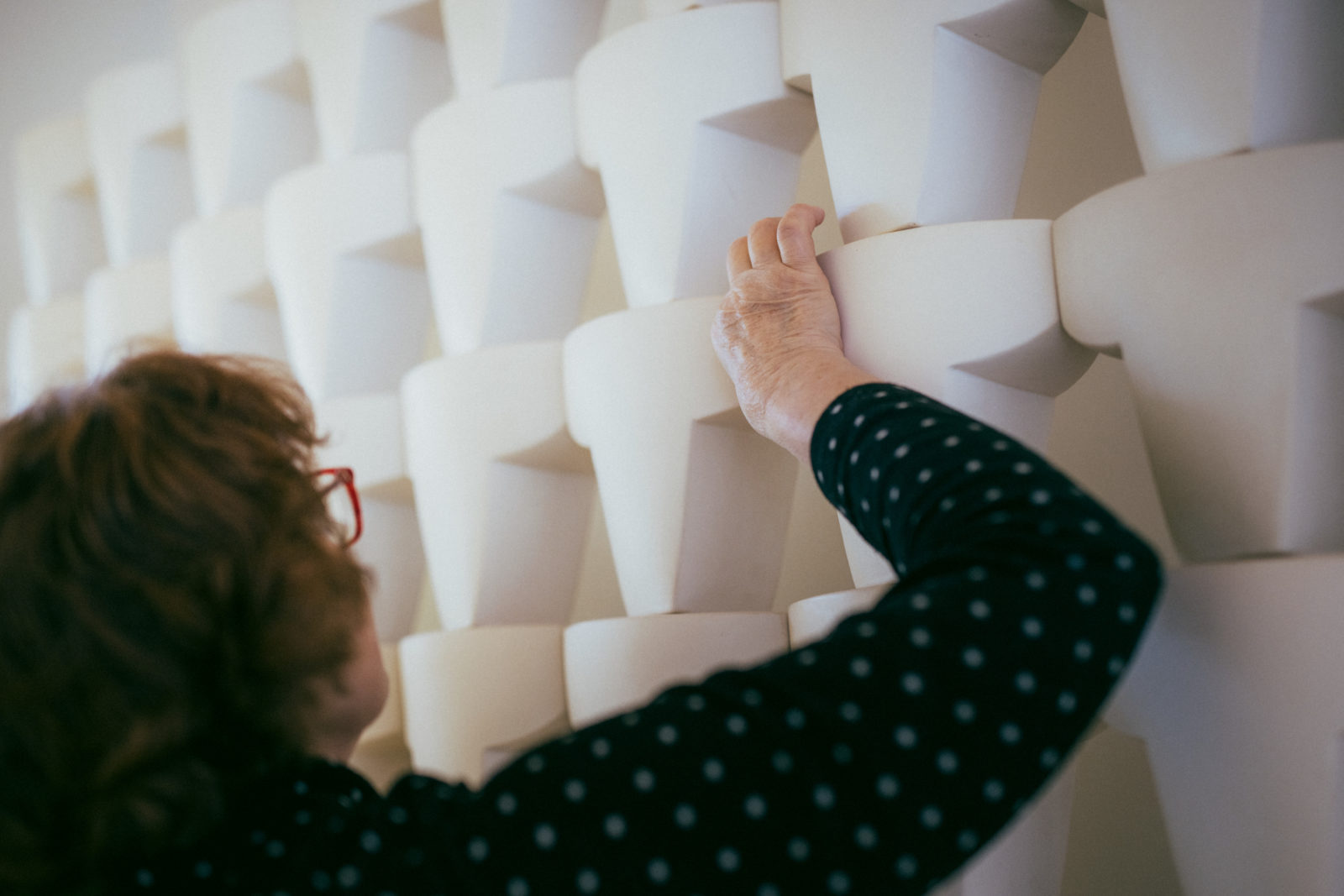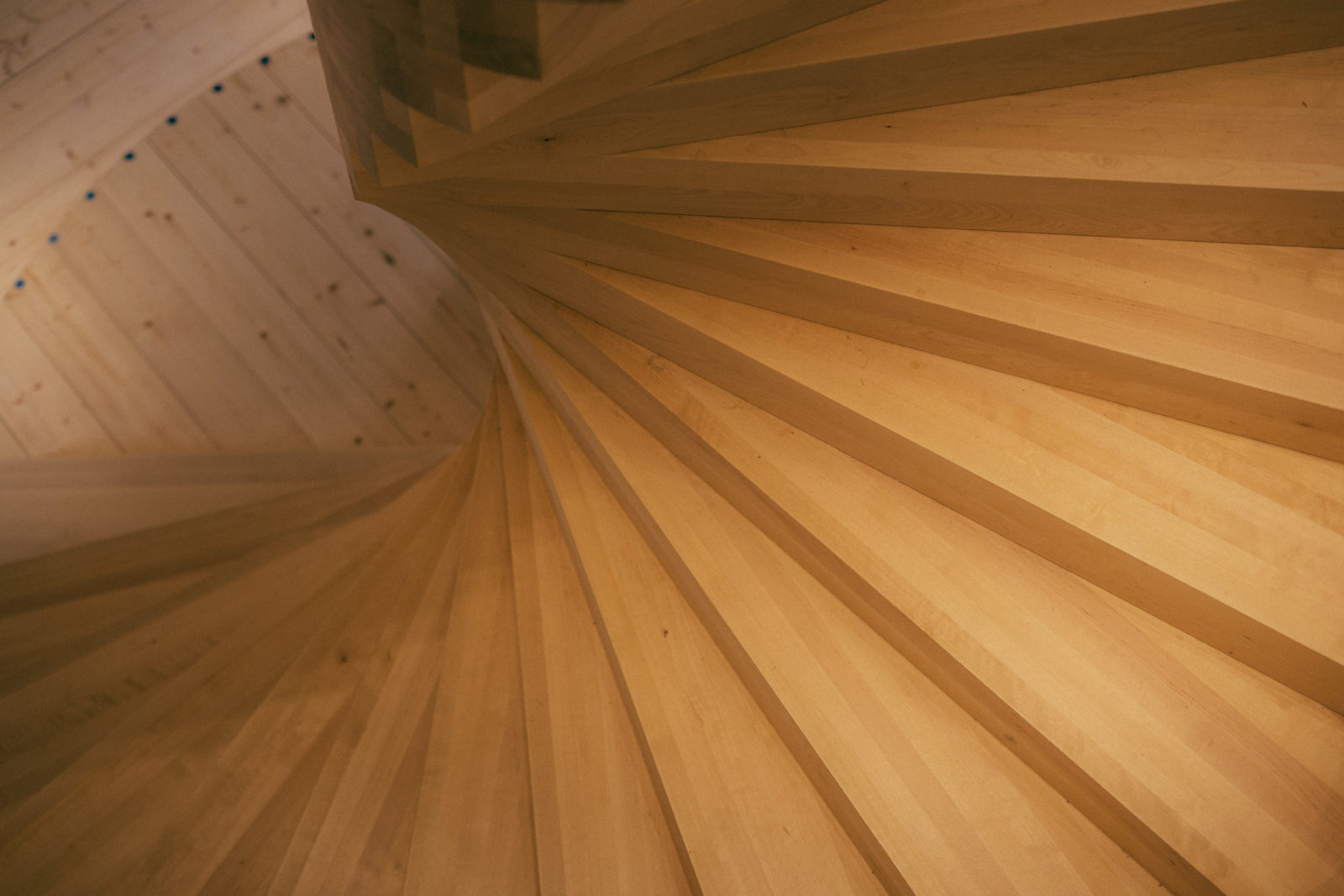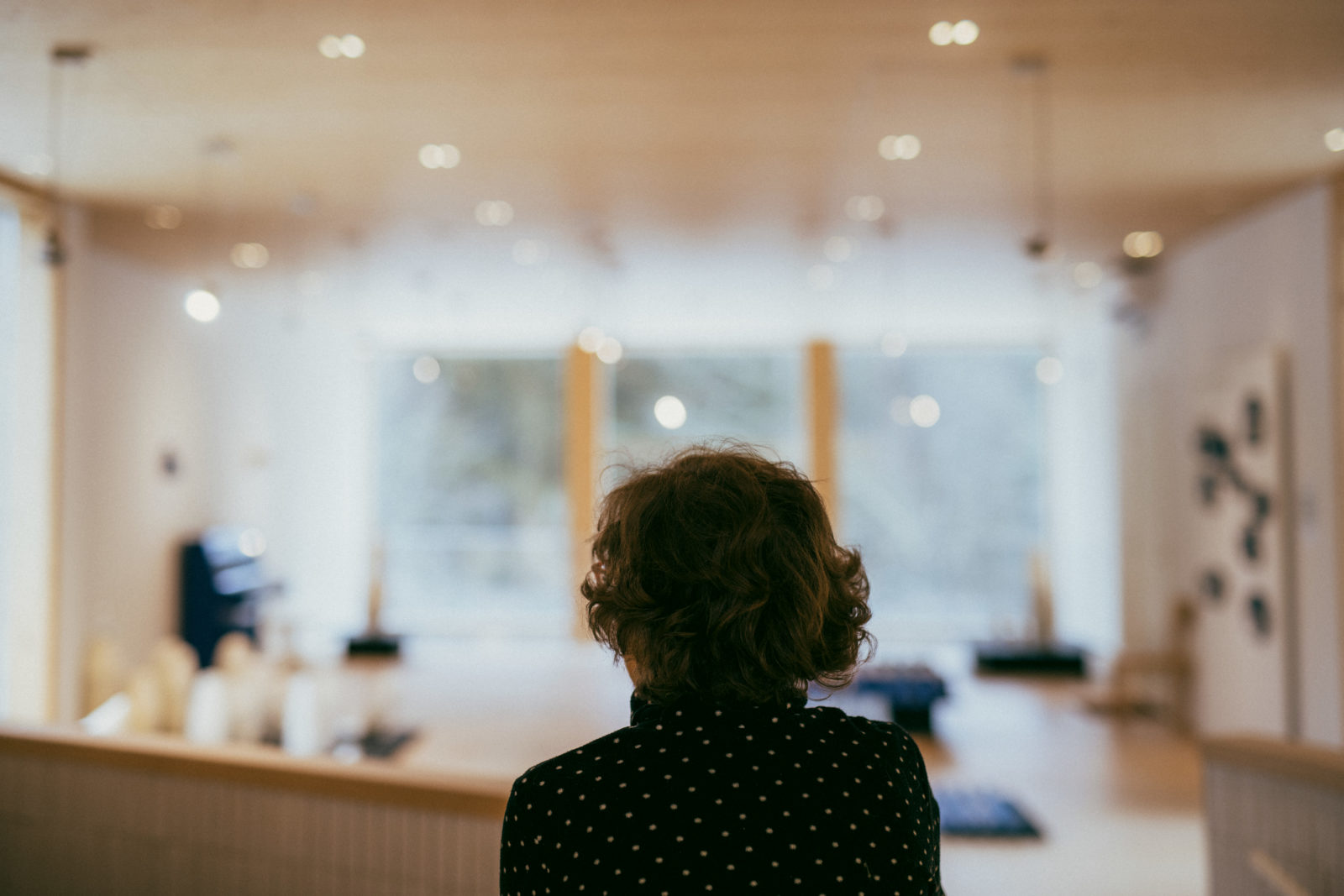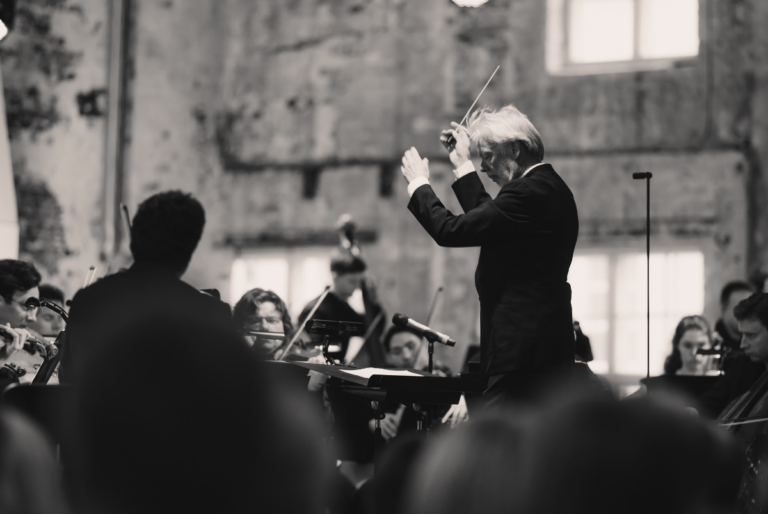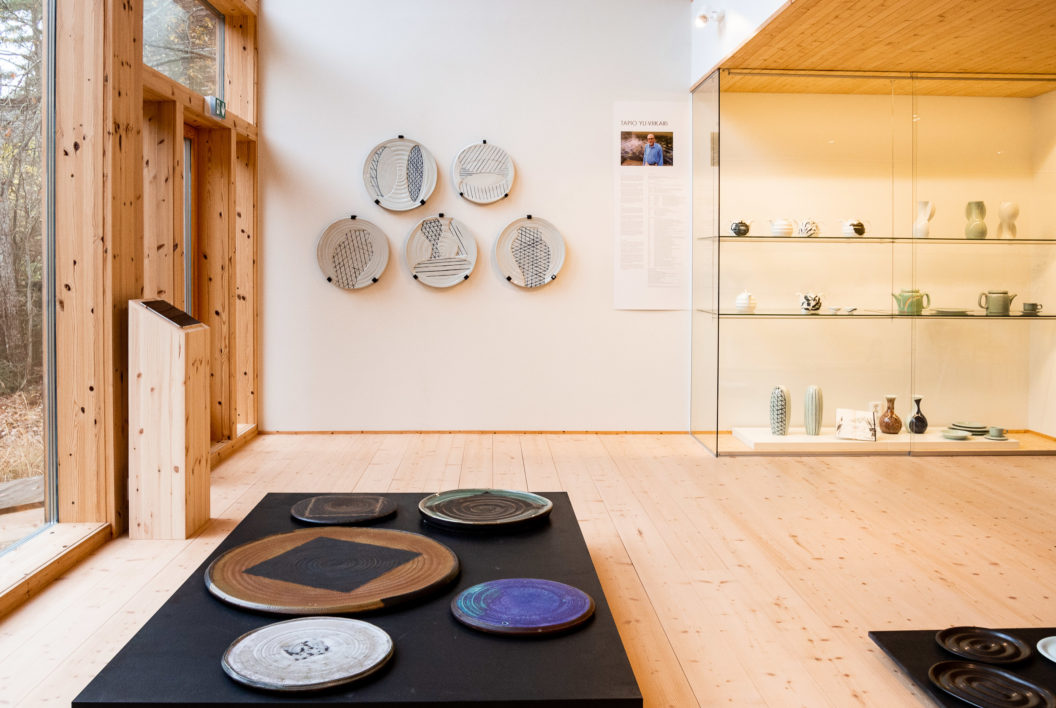
KWUM winter exhibition
I keramikmuséet KWUM visar vinterutställningen konstvKWUM ceramic museums winter exhibition show amazing art and sculputers by Irma Weckman, Kim Simonsson, Tapio Yli-Viikarirk och skulpturer av Irma Weckman, Kim Simonsson och Tapio Yli-Viikari.
IRMA WECKMAN – CONCRETE
Irma Weckman grew up in a rural landscape in Nurmijärvi, Finland. As a child, the shiny blue clay soil of the local freshly plowed fields invited her to try and form shapes.
Weckman’s passion for ceramics as a hobby carried through a period, when as a young woman, she started studying education and social work – and later when she worked as a social worker at Helsinki University Central Hospital. The doors of the Helsinki University of Art and Design and its ceramic art department finally opened for the adult student Weckman in 1979. “I studied under the guidance of Kyllikki Salmenhaara during her last working years. She was a reformer of ceramic art teaching.” Irma Weckman’s thesis focused on the oxblood glazing. “The capriciousness and sophistication of oxblood glaze is what makes it so fascinating. Due to the effect of the reducing burning method, the green color of the copper changes to red.” Weckman has utilised the technique she adopted in her everyday objects and unique ceramic works throughout her career.
“In addition to the process of firing clay, earth and stone are also continuously present in the ceramicist’s work. The stone weathers and becomes clay. We walk on clay soil and utility articles are made from the same material.” Of the different firing methods, Weckman is most attracted to the primitive black smoke firing that takes place in a pit. Irma Weckman has used different materials equally, from stoneware to red clay, and has combined different techniques in her work. Her work is often inspired by the shapes of nature, for example exotic fruit, observed on work trips to the Caribbean.
Irma Weckman founded the Ceramic Center Septaria at the Helsinki Cable Factory, which she managed from 1990–2005. Galleria Septaria’s first own exhibition got its name from working at night. Lavoro nero also pointed to the possibilities of black smoke firing.
Weckman has studied the essence of clay in her fragile, partially fractured works. Through that, the transience of everything has also become perceptible. The decomposable urn was created based on ecological principles. She has made it to order for burials, but has also used it as an element in many important installation art works. Her focus on creative work has led Irma Weckman to participate in dozens of exhibitions in Finland and around the world. However, alongside this artistic work, she has also found time and enjoyed teaching ceramics, explaining that “My own creative work has been of primary importance to me and an absolute prerequisite for teaching.”
KIM SIMONSSON – A CRAFTSMAN’S GENE
Kim Simonsson is a Finnish-Swedish sculptor, who lives and works in the Fiskars Village, Finland. He has been working with ceramics for over 20 years and through his creations has influenced the way we encounter the ancient materials. In the world of Simonsson’s creations, children and animals have the main role.
In his early works, Simonsson first built up his pieces with compact clay around an iron frame, and from this produced a plaster mold. He created the final work of art by pressing the clay into the dry and finalised plaster mold. The sculpture could still be polished before the firings and glazes. This is for example, how the artwork ‘The Girl Jumping in a Pool of Water’ as exhibited here in KWUM, was created.
Simonsson thinks he has inherited a craftsman’s gene. The craftsmanship is further evident in the green moss figurines, which have become internationally appreciated. He works the clay with his fingers into the desired shape. The shapes are often formed into children who carry objects they’ve found with them. In the objects, however, old craftsmanship is combined with technology. The moss-like surface has been achieved with neon yellow nylon fiber, which has been electrostatically transferred on the surface of the black-painted ceramic artwork. Perhaps the interest in bringing together different techniques was born when Simonsson studied at The University of Art and Design, now Aalto University.
During 2022 Simonsson’s artwork has been exhibited on several occasions in France. Simonsson participated in the ‘Lille 3000 Utopi festival’, where ten 4.5 meter tall enlargements of his moss people were made in collaboration with Atelier St Roch and exhibited between May and October. These giants welcomed about 2 million visitors to the festival on Lille’s main street, Rue Faidherbe.
Currently Simonsson has a solo exhibition at the Galerie Nec in Paris and almost 30 sculptures are being exhibited at the Biennale of Contemporary Art in Lyon.
The moss people’s stories are detailed in the Tales of the Moss people book, which was published in autumn 2022.
TAPIO YLI-VIIKARI – TAKING A BREAK
For Tapio Yli-Viikari, as a first year student at the Helsinki University of Art and Design in 1970, ceramics had not been the first choice. A multi-talented Yli-Viikari was more interested in theatre, staging, architecture and design. However, as he states, “The appeal of the ceramics was strengthened under the guidance of Professor Kyllikki Salmenhaara. She was a defender of the forgotten clay.” The course had equal participation by women and men. During a study trip to Europe, Yli-Viikari was fascinated by Pablo Picasso’s ceramics and after this he felt it was unnecessary for the world of ceramics into be considered somehow as only a women’s field.
After graduating, Yli-Viikari worked at Arabia’s factory as a product designer in 1976-78 and then as director of the art department in 1979-1986. After that, he was appointed as a professor in the ceramic and glass art department at the University of Art and Design, a position he held for three decades until 2017. He has had dozens of solo exhibitions, in Japan, California and in many places in between. He is happy to tell about the exhibitions he has built and curated for other artists – these included, Yli-Viikari has been taking part in over one hundred exhibitions.
He has been particularly keen on researching the history of ceramics and experiencing the ceramic masters working surroundings. It has been essential for concentration on one’s own work.
Asia is close to him. He explains, “Japan, in 1976, was a turning point followed by Korea. The roots of Japanese ceramics are in China – via Korea. One should always go to the original source. You will always find something new and surprising on the way. China has given that to me.”
Asia manifests itself in the works of the Taking a break exhibition: The unpretentious, subtle forms. In a spiral that makes the water move, in the composites of porcelain and cobalt paintings. In pursuit of perfection in the making of celadon glaze. In the ink paintings with nature motifs, with its each brushstroke opening up a whole world of Chinese characters.
Yli-Viikari has returned at the origins of Chinese ceramics during his several journeys and working assignments in China since 1995 – and most recently in 2019. The journey continues and the next trip is being planned.
03.11.2022 – 31.03.2023
Thu-Sun noon-5 p.m.
Contacts
KWUM keramikmuseum, Bakluravägen 12, 10470 Fiskars
Location on map